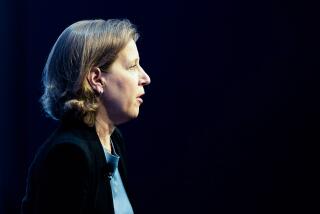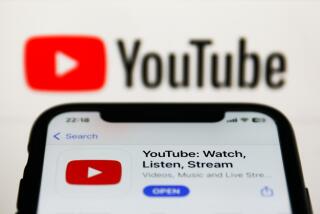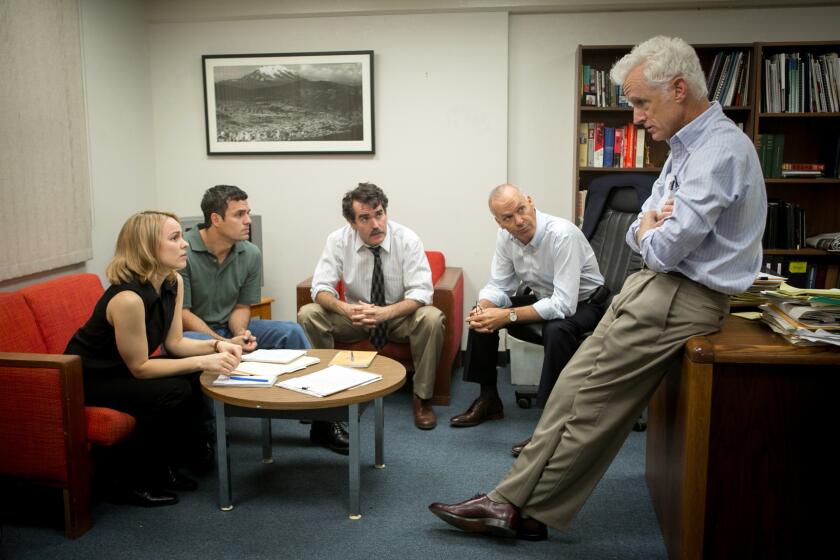YouTube becoming a strategic model for parent Google
Once derided as Google’s folly, the home of cheesy cat videos and the money-losing stepchild of an otherwise wildly profitable company, YouTube is emerging as a model for the more nimble, faster-paced company that Google co-founder Larry Page hopes to foster as he takes the reins as chief executive.
That’s quite a shift. Though YouTube was a cultural phenomenon when Google Inc. bought it in 2006, it was bleeding money — losing nearly half a billion dollars as recently as 2009, by one estimate. And though YouTube wasn’t Google’s Siberia, it wasn’t exactly a mecca for many ambitious Googlers.
But now, YouTube’s revenue has grown dramatically. Many Google employees increasingly see it as an attractive place to work, with a less bureaucratic environment that lets them run with their ideas. Page, by all accounts, is looking to inject that same energy into Google, spurring the mother company to innovate more quickly in its rivalry with fast-moving Facebook.
“YouTube has proven it can flourish in a model where there is more autonomy, and in that way I think it is an example and a potential model for other areas of the business,” said new YouTube CEO Salar Kamangar, who as Google’s ninth employee has worked closely with Page and co-founder Sergey Brin since Google’s earliest days. “Larry is really focused on making sure that Google has a culture where impatient people can be successful, where we are doing bold things on the technology side that matter for end users. And I think YouTube is a good example of where, if you’re an engineer, you can get things done quickly and you can have a big impact.”
The shift comes as the video site is increasingly focused on revenue. Analysts disagree whether YouTube is profitable, and Google won’t disclose YouTube’s finances except to say revenue more than doubled in 2010. Critics of its $1.65-billion purchase have melted away.
“No one would fault Google for making the acquisition of YouTube at this point,” said Kenneth Sena, an analyst with Evercore Partners who has issued some of the most bearish estimates of YouTube losses.
Now Kamangar, who designed Google’s tremendously profitable AdWords advertising program, is pursuing an ambitious agenda to reorganize YouTube’s videos around topics — much like niche TV channels — rather than individual videos.
The site hopes to be as revolutionary as cable television, which reshaped TV a generation ago by introducing a host of niche channels that offered a broader array of programming than the three big networks — ABC, CBS and NBC — were able to show.
“I think 995 of the next 1,000 TV channels will be created on YouTube,” said Hunter Walk, YouTube’s director of product management.
With more than 600 workers, YouTube remains a sliver of 25,000-person Google. But YouTube plans to increase its workforce by more than 30% in 2011, an even faster pace of growth than the parent company.
“We’ve got a lot of stuff we want to build, and we’re going to need some more people to do that,” said Judy Gilbert, YouTube’s human resources chief, who, with Kamangar and former Google Books chief Dan Clancy, is one of several Google executives now at YouTube.
With its distinct red, black and white color scheme, its open office spaces devoid of cubicles and its prominent indoor putting green, YouTube has a different feel from the Googleplex. At YouTube, an engineer referring to “the company” often isn’t talking about Google.
Under Kamangar, who became CEO last fall after the departure of co-founder Chad Hurley, YouTubers like Jenna Bilotta, a user-experience designer who transferred to San Bruno, Calif., from Google, say they are attracted by the chance to quickly develop ideas.
“I have definitely recruited a bunch of people I know from the mother ship to come over,” Bilotta said. “There are some people that just have that start-up thing inside of them.… A lot of people end up coming over to YouTube to satisfy that part.”
An example of YouTube’s build-it-now culture, she said, was a sudden insight she had recently to solve an issue that had stymied her team. Bilotta, who works on the Watch Page, the frame for watching YouTube video, canceled her meetings and spent the day on a mock-up of her idea to improve a user control feature.
Alex Nicksay, the technical lead for the team, took Bilotta’s mock-up and worked all night — 14 straight hours — writing the software code.
“People can build what they want to build and say, ‘Look what I did,’ and you evaluate it that way,” Nicksay said. “That’s a very strong cultural value we have here that no one will say, ‘Don’t try that.’ ”
Swift writes for the San Jose Mercury News/McClatchy.






